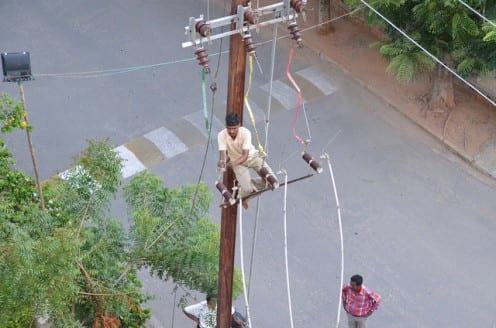Freebies and socioeconomic indicators
By Shriram Venkatraman, on 14 July 2013

Photo by Rajib Ghosh (Creative Commons)
The use of socioeconomic indicators in surveys is well documented. While conducting a sample survey in the Indian field site (Tamil Nadu), it slowly emerged that some variables used as socioeconomic indicators were going awry. Even in the most poor localities, almost every house had two television sets, a grinder, a mixie (a mixer), and if the household had a member in college or higher secondary school, it had a laptop and everyone had a mobile phone (though at least this was not too surprising after reading the book The Cell Phone Nation)
What was available only to the middle class 5 or 6 years ago and was a luxury to the poor was now with the poor too. It seemed like a puzzle and the answer lay in the election manifestos of different political parties which promised (and to a certain extent delivered) ‘freebies’ if elected to power in the state of Tamil Nadu. It seemed like a competition between which party could promise the most free stuff. Though, several articles had appeared in journals/newspapers speaking about the effect that all this had created, the survey served as the right opportunity to witness this first hand.
New socioeconomic indicators seemed to be needed now to assess the real conditions in the field site. The thought of reassessing the field site with newer advanced socioeconomic indicators soon emerged and it was exactly like putting together a puzzle until one crucial and basic/foundational piece fitting all of these together was missing and that crucial piece turned out to be electricity – the electricity needed to run/operate any of these electrical products. Everything else seemed to be in place except for the electricity supply, which was either missing for several hours of a day or was fluctuating constantly, sometimes even killing some of these electrical products.
The lesson we can ear from this is to never assume basic necessities are in place just by seeing all the paraphernalia.
 Close
Close




